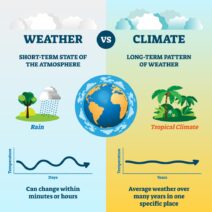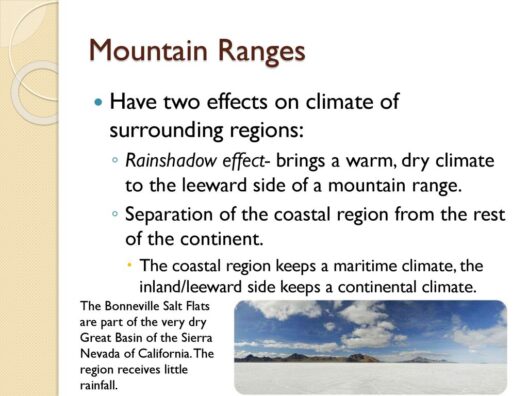As the Earth spins gracefully on its axis, one might ponder a seemingly whimsical question: what would happen if it ceased to rotate? The sheer notion stirs curiosity, but it also opens the door to understanding an intricate system that governs our climatic conditions. The Earth’s rotation, a continuous and reliable phenomenon, profoundly influences weather patterns and climate. From the formation of winds to the cyclical nature of seasons, the dynamic interplay between the Earth’s motion and atmospheric behavior is as crucial as it is fascinating.
To begin, the Earth’s rotation occurs from west to east, leading to a cycle of day and night that is fundamental to life as we know it. This rotational period lasts approximately 24 hours and is responsible for the diurnal cycle. But beyond mere timekeeping, this movement has repercussions for atmospheric circulation. As the Earth spins, different regions experience varying amounts of solar energy, primarily due to the curvature of the planet. Areas at the equator receive an abundance of sunlight, while polar regions languish in relative darkness for extended periods. This differential heating fuels convection currents in the atmosphere, setting the foundational tone for global winds.
The Coriolis effect is an essential concept that arises from the Earth’s rotation. As air masses move from high to low-pressure areas, the Coriolis effect causes them to deflect. In the Northern Hemisphere, this deflection occurs to the right, while in the Southern Hemisphere, it shifts to the left. Consequently, weather systems are influenced considerably; for example, they dictate the clockwise rotation of high-pressure systems and the counterclockwise pattern of low-pressure systems. This phenomenon explains why hurricanes spin counterclockwise in the Northern Hemisphere, often unleashing torrential rains and fierce winds. The interconnectedness of rotation and weather systems reveals a delicate equilibrium, highlighting nature’s finely-tuned mechanics.
Furthermore, the implications of the Earth’s axial tilt, or obliquity, cannot be overlooked when exploring climate variability. The Earth is tilted at an angle of approximately 23.5 degrees, resulting in seasonal changes as it orbits the sun. During certain times of the year, the Northern Hemisphere tilts toward the sun, heralding the summer season, while the Southern Hemisphere experiences winter, and vice versa. This axial tilt dictates the intensity and duration of sunlight received in different regions, ultimately influencing seasonal weather patterns. The dance of the Earth and its tilt creates a rhythm of climate variability, leading to a plethora of seasonal phenomena, from the gentle blossoms of spring to the harsh freezing temperatures of winter.
This intricate relationship between rotation and weather presents significant challenges as climate change emerges as a formidable global threat. As the Earth’s average temperature rises, driven largely by human-induced greenhouse gas emissions, the impacts of changing weather patterns become increasingly evident. Shifts in the jet streams, intensified storms, and changes in precipitation patterns are direct manifestations of this altered dynamic. Yet, the question remains: How can societies adapt to these profound changes instigated by a spinning planet?
In contemplating mitigation strategies, an understanding of the Earth’s rotational influence on climate offers vital insight. Emphasizing sustainable practices, such as transitioning to renewable energy sources and enhancing energy efficiency, could curtail greenhouse gas emissions significantly. Moreover, conservation of natural carbon sinks, such as forests and oceans, plays a crucial role in regulating atmospheric carbon levels. As guardians of our planet, humanity must become more deliberate stewards, acting with reverence for the profound connections between Earth’s rotational movement and the thriving ecosystems it nurtures.
Moreover, climate resilience is paramount in addressing the challenges posed by a changing climate. Communities around the globe must learn to anticipate and adapt to shifting weather patterns. This could involve developing infrastructure capable of withstanding severe weather events, implementing water management systems that accommodate changes in precipitation, and enhancing agricultural practices to adapt to new climatic realities. The collective responsibility of nations and individuals alike is to innovate and collaborate in building a sustainable future, even as the Earth continues its majestic spin.
In this ongoing dialogue about climate adaptation, education emerges as a powerful tool. By fostering awareness of the Earth’s rotational influence on climate, societies can engage in meaningful discourse that drives collective action. Schools, universities, and community organizations can cultivate an understanding of environmental stewardship, arming future generations with the knowledge needed to face impending challenges. With each renewable energy project undertaken and each conservation effort embraced, humanity collectively honors not only the stunning planetary movement but also the fragile balance that upholds life.
Ultimately, the rhythm of the Earth’s rotation intricately influences our climate, weaving together the fabric of weather patterns and seasonal shifts. As we stand on the precipice of significant climatic transitions, it is essential to grasp the underlying processes that shape our environment. The implications of these celestial movements call for urgent action, demanding that humanity embrace sustainability and resilience in equal measure. Only by acknowledging and acting upon our interconnectedness with the Earth can we ensure a thriving planet for future generations, as it continues to spin through the cosmos, unveiling mysteries yet to be discovered.




